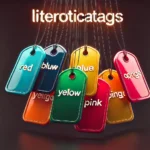your topics multiple stories: In today’s digital era, where content is king and attention spans are short, standing out requires more than just a good idea. The key to compelling and sustainable online content is variety, relevance, and value.
This is where your topics multiple stories approach becomes essential. Instead of focusing on a single storyline or viewpoint, this method allows you to expand a topic into multiple engaging narratives—each catering to a different audience segment, platform, or marketing goal.
Table of Contents
- Your Topics Multiple Stories – A Game-Changer for Content Creators
- The Benefits of Adopting the “Your Topics Multiple Stories” Approach
- Your Topics Multiple Stories Strategy for Writers and Marketers
- Examples of “Your Topics Multiple Stories” in Action
- Your Topics Multiple Stories and SEO: A Perfect Match
- Mistakes to Avoid When Using “Your Topics Multiple Stories”
- Tools to Help You Master Your Topics Multiple Stories Strategy
- Final Thoughts on Embracing “Your Topics Multiple Stories”
- Conclusion
Your Topics Multiple Stories – A Game-Changer for Content Creators
Gone are the days when writing a single blog post or article was enough to capture and convert an audience. Now, content creators, marketers, and brands need to think in terms of ecosystems—not just outputs. With your topics multiple stories, a single subject can become a wealth of diversified content that fuels blogs, videos, podcasts, social media posts, and more.
What Does “Your Topics Multiple Stories” Actually Mean?
At its core, your topics multiple stories refers to the strategy of extracting various storylines, formats, or entry points from a single central theme. For instance, if your primary topic is “mental health,” you can tell multiple stories like:
- Personal recovery journeys
- Expert interviews on coping mechanisms
- Data-driven insights and trends
- Resource lists and actionable advice
Each piece connects back to the same theme but offers fresh value in a unique voice or medium.
The Benefits of Adopting the “Your Topics Multiple Stories” Approach
Creating multiple stories from a single topic isn’t just a creative trick—it’s a productivity and SEO booster. Here’s how it helps:
Increases Content Volume Without Sacrificing Quality
By branching out from one core topic, creators can generate a content series instead of a standalone piece. This ensures consistency and enhances the value offered to readers.
Enhances SEO and Keyword Targeting
When you’re covering a single topic from multiple angles, you naturally include a broader range of related keywords. This makes your content more likely to be indexed and discovered via organic search.
Serves Multiple Audience Segments
Different people consume content differently. Some prefer visual formats, others like deep-dive articles, and some prefer quick-list tips. With your topics multiple stories, you meet each audience where they are.
Your Topics Multiple Stories Strategy for Writers and Marketers
Strategizing content through this method requires planning but offers long-term benefits. Here’s a step-by-step framework you can follow:
1. Choose a Broad Yet Focused Topic
Start with a topic that is relevant to your niche but has the potential for deep dives. Topics like “remote work,” “AI in marketing,” or “sustainable living” can spawn numerous storylines.
2. Brainstorm Multiple Angles
List the different perspectives from which the topic can be approached. This could include:
- Industry expert perspectives
- Case studies
- How-to guides
- Contrarian views
- Tools and resources
3. Match Story Types to Platforms
Certain stories perform better on certain platforms. A visual infographic may be best for Instagram or Pinterest, while an in-depth analysis suits LinkedIn or a long-form blog.
4. Schedule and Sequence Strategically
Plan how and when each story is released. Sequencing stories helps build anticipation and creates a narrative arc across platforms or campaigns.
Examples of “Your Topics Multiple Stories” in Action
Example 1 – Digital Marketing Trends
Main Topic: 2025 Digital Marketing Trends
Multiple Stories:
- “Top 10 Marketing Trends to Watch in 2025” (Listicle Blog)
- “How AI Is Reshaping Paid Advertising” (Data Report)
- “Expert Roundup: 2025 Predictions from Industry Leaders” (Interview Series)
- “Infographic: The Future of Digital Marketing” (Social Media Post)
Example 2 – Remote Work
Main Topic: Transitioning to Remote Work
Multiple Stories:
- “My First Year Working Remotely: What I Learned” (Personal Story)
- “The Best Collaboration Tools for Remote Teams” (How-To Guide)
- “Remote Work Challenges Nobody Talks About” (Contrarian Opinion Piece)
- “Tips for Employers Managing Remote Staff” (Advice Article)
By repurposing and repositioning your core topic, you get multiple content opportunities without redundancy.
Your Topics Multiple Stories and SEO: A Perfect Match
Search engines prioritize content that demonstrates expertise, authority, and trustworthiness (E-A-T). With your topics multiple stories, you’re naturally creating a content hub around a subject—fulfilling these SEO criteria.
Internal Linking Opportunities
Publishing multiple stories on the same topic lets you create an internal linking strategy. Readers stay longer on your site, and search engines understand your site’s structure better.
Long-Tail Keyword Domination
Different story formats can focus on varied keyword combinations. For example, while one post may rank for “how to use AI in email marketing,” another may rank for “email automation tools 2025.”
Increased Dwell Time and Lower Bounce Rates
When users find a valuable article and see related stories linked or suggested, they are more likely to continue exploring, improving site metrics and SEO ranking.
Mistakes to Avoid When Using “Your Topics Multiple Stories”
While the benefits are clear, some pitfalls can reduce the effectiveness of this strategy.
1. Repetition Without Added Value
Don’t repeat the same content in different formats. Each story should offer new insight, data, or perspective.
2. Ignoring Audience Preferences
Always keep your audience in mind. If your followers prefer quick visual content, don’t overload them with only long-form pieces.
3. Poor Execution Without a Plan
Diving into multiple stories without a cohesive plan can lead to inconsistency in tone, quality, and publishing schedule.
Tools to Help You Master Your Topics Multiple Stories Strategy
There are several tools that can help streamline your workflow and ensure consistency in quality and strategy.
Content Ideation and Planning
- Trello / Notion: Organize story ideas and deadlines
- AnswerThePublic: Find user-generated questions around your topic
- Google Trends: Identify what’s hot within your topic scope
Content Creation and Optimization
- Grammarly / Hemingway: Improve readability and grammar
- Surfer SEO / Clearscope: Optimize content for target keywords
- Canva: Create visual content from text-based stories
Distribution and Promotion
- Buffer / Hootsuite: Schedule and monitor social media distribution
- Mailchimp / ConvertKit: Turn your stories into newsletter series
- WordPress / Medium: Publish and organize stories in categories or series
Final Thoughts on Embracing “Your Topics Multiple Stories”
In a saturated content landscape, relevance and repetition with innovation is the secret to winning. The your topics multiple stories method empowers creators to generate more value, build trust with diverse audiences, and maintain a consistent brand voice across platforms. It enhances creativity while aligning with technical SEO and content marketing best practices.
Rather than exhausting yourself trying to invent something brand new each time, look inward. You already have the content gold—you just need to mine it from different angles. With thoughtful execution, a single idea can take you much further than you ever imagined.
Conclusion
“Your topics multiple stories” isn’t just a trend—it’s a timeless strategy that mirrors how audiences truly learn, engage, and connect in today’s digital world. Whether you’re a blogger, business owner, or content marketer, it’s time to stop thinking in singles and start building multi-story narratives around your best ideas.
Let your content work harder, reach farther, and last longer—with the power of your topics multiple stories.
Read More: Practical Ways to Support Wellness in the Workplace and Beyond





